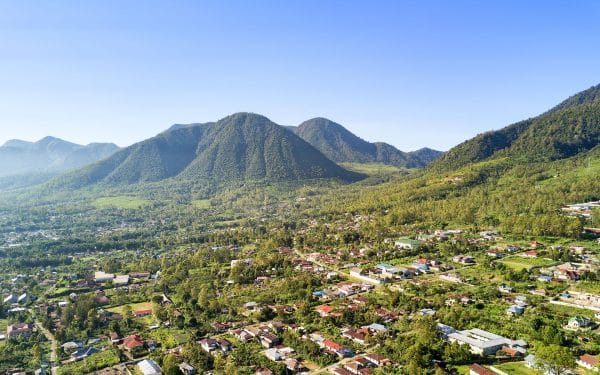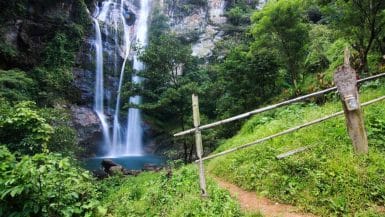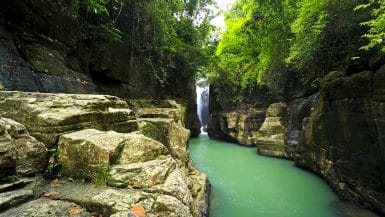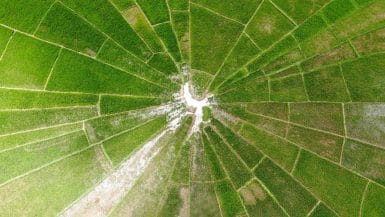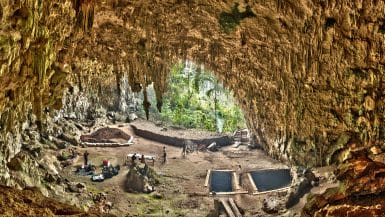East of the world-famous Labuan Bajo of Flores, a small town in the highlands called Ruteng. Nested under the foot of mountains, this city offers fresh, cool air and town sightseeing—It is indeed worth a stop-over during your long trip to this Island. Ruteng Travel Guide provides complete information for an all-out exploration of this beautiful township.
Without further ado, let’s start with some reasons why you must visit and experience this one of the heavens on earth.
Reasons to Visit
A Glimpse of Ruteng
Ruteng is a little township in the uplands en route for the western end of Flores, East Nusa Tenggara, Indonesia. Established since the Dutch colonial time, it is now the administrative capital of Maggarai Regency (once was Manggarai kingdom). With an area of about 72.64 km², it has approximately 40.000 inhabitants.
Dating back to its history, Ruteng comes from the heart of a small village named Compang Ruteng or Ruteng Pu’u. The village still exists today, keeps maintaining the heritage of the original houses of Manggaraian and compang. Dubbed as a sacred place, where people believe that the ancestors live, Compang has all the houses surrounding the center concentric.
That is why, despite the adherence to the Roman Catholic faith, the Manggarai people keep preserving much of their local beliefs and customs.
Ruteng and Its Nicknames
Located in the highlands or under the foot of Mount Anak Ranaka, Ruteng gets its nickname as a cool (or even cold) town. The air is refreshingly cool, although the temperature can go exceptionally down compared to other islands’ cities.
Another well-known nickname granted for this town is “the city of a thousand churches” due to the numerous churches. There used to be a lot of Catholic missionaries who set foot in this region to spread the religion. It leads to another similar moniker, namely “the city of a thousand monasteries.”
More Reasons to Visit
Once founded by the Dutch colonial rulers, Ruteng is famous for its European-style buildings. Being the next large town east of Labuan Bajo, this town is a popular stop-off for visitors before traveling further across overland Flores.
What is more? Thanks to the pleasantly cool climate, visitors can go around the town and other interesting destinations in the countryside. What can we get for more details from the Ruteng Travel Guide below?
Ruteng Travel Guide
What to do
Although most of the main tourist destinations are outside the town, Ruteng still offers its remarkable charm downtown. Check out some of them as follows.
Ruteng Cathedral
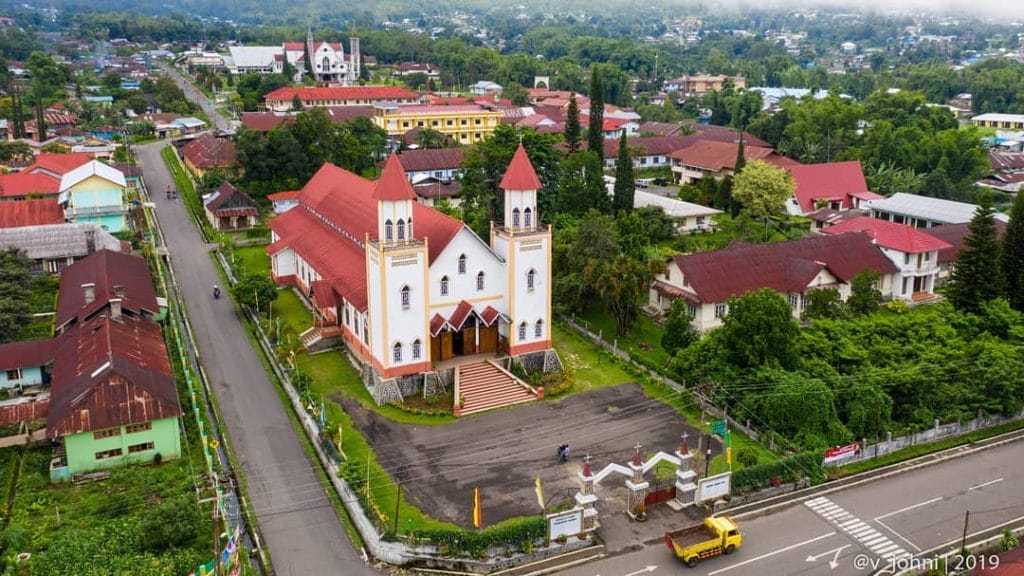
Ruteng has its landmark, namely the Old Cathedral Church. It is more than a century old.
You can easily spot this classic European-style church since it stands tall overseeing the city center and shopping area. This building has striking, distinctive colors, the dominant white and red in some parts leading to another name, “the Red Chapel.”
This building is about 24 meters in height, including a bell tower, located at the front of the church. Alongside the walls, you will see classic, colorful window glass rows.
The King’s House
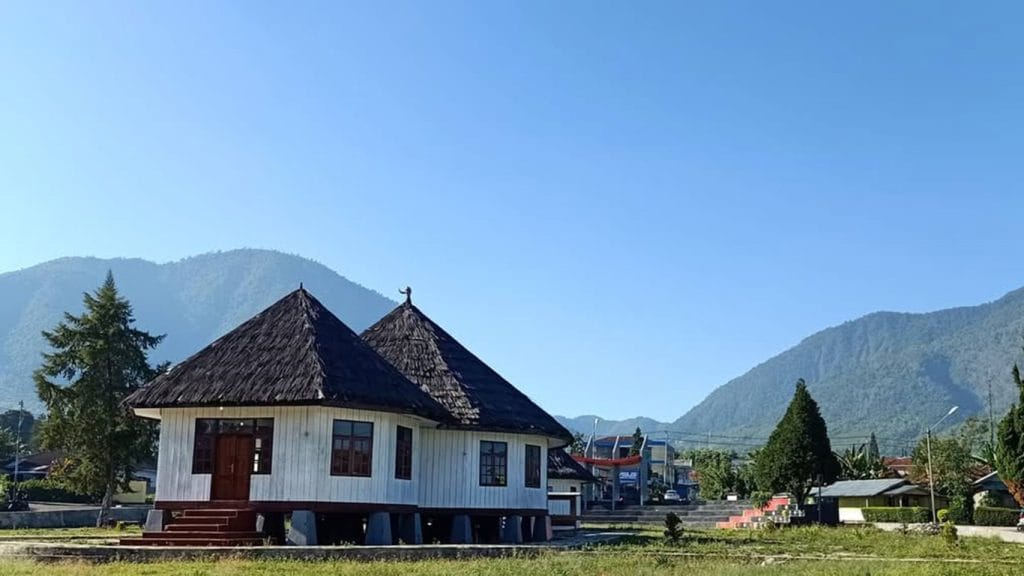
Another must-see landmark in town is the King’s House. It is the former royal residence of King Baroeng of Manggarai.
The residence is a great example of Mbaru Wunut (the native term for a traditional Manggarai house). This royal house shows an octagonal design with the iconic conical roof of Manggarai and has double octagons with an attached outbuilding for the kitchen.
After strolling around the town, you can ahead to the surrounding beautiful nature of the countryside. There are several main destinations and attractions you put into your visit list.
Wae Rebo Village
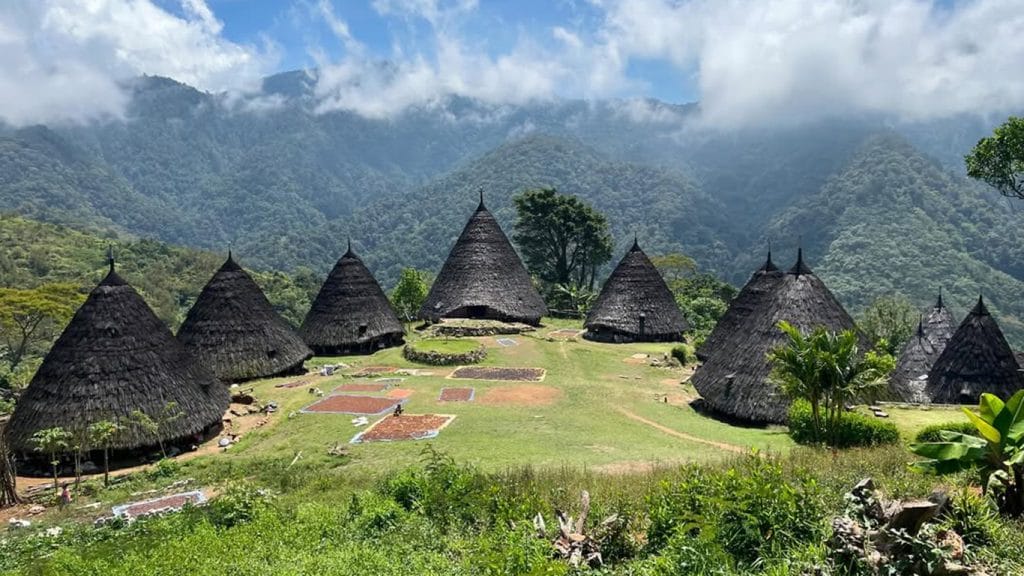
Experience the local first hand by giving an overnight trip to the Wae Rebo Village from Ruteng, about twenty minutes through Flores Highway to the west.
Wae Rebo is a picturesque traditional village, mostly still untouched by modern technology, living in the iconic houses of round huts. Located at about 1200 m altitudes, the only way to get here is hiking. The award is a spectacular view and clear sky at night.
Since the villagers’ English is not good, the foreign visitors usually need a guide with about IDR 200,000.
Entering the village, there is a mandatory donation of IDR 50,000 per group (four people) for a mandatory welcome ceremony. After that, you can get a warm welcome and tea or coffee while entering any hut. Coffee production is this village’s best commodity.
If you want to experience the locals closely, the best recommendation is to stay overnight. The sleeping costs about IDR 325,000 per visitor, including three meals a day. Since there is no mobile phone reception service, there is a VHR radio for emergencies.
Ruteng Pu’u Village
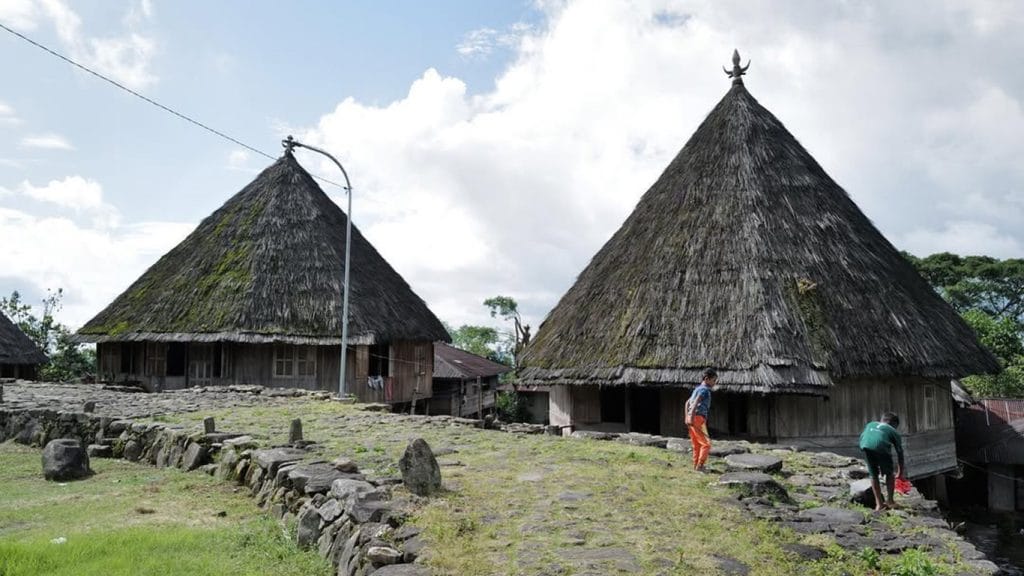
Ruteng Pu’u Village is another somewhat easier and closer (about 15 minutes from Ruteng) alternative to Wae Rebo. This village also has several traditional houses and cultural activities to offer. The visitors need to pay about IDR 20,000 – 25,000, excluding the guide.
Compang Ruteng Ceremonial Center
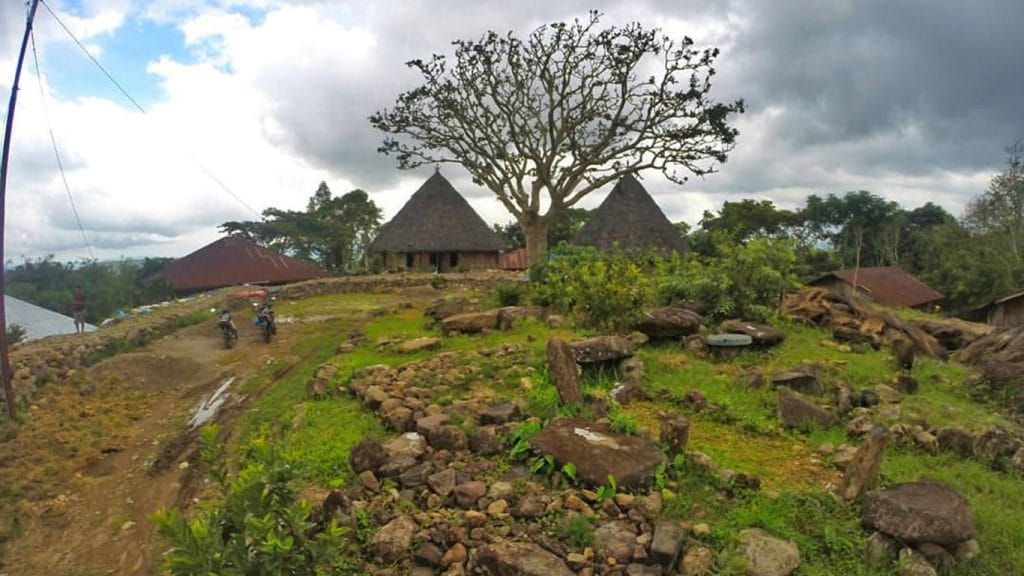
Compang means a stone altar, serving as a traditional ceremonial center. You will see it situated in a roughly rounded field on a raised site encircled by a low stockade built of rocks. There used to stand a banyan tree in the center, but now people replace it with a smaller dadap tree.
People call the banyan tree “ruteng” in the local language (with a voiceless “e” compared to the name of the town).
As mentioned earlier, there are traditional octagonal with conical roof Manggarai houses outside the perimeter. One is Mbaru Wunut (a residential house), and another is Mbaru Gendang (a meeting house).
There is a small shop run by the inhabitants of the first house, while the second house has the function to store ceremonial artifacts.
Liang Bua Cave
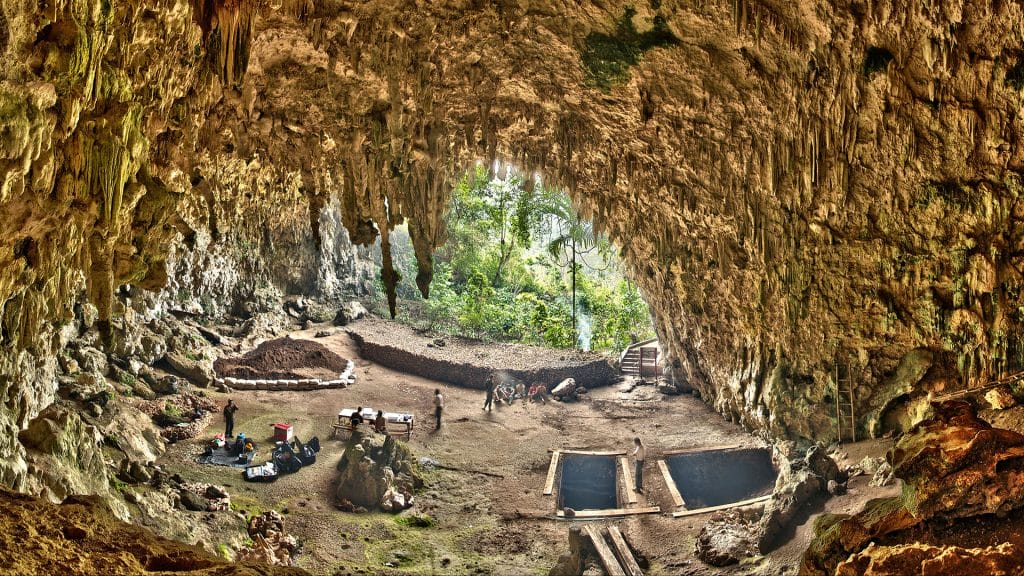
Liang Bua is one of the numerous limestone caves on Flores Island, slightly north of the Ruteng town. It is a prehistoric karst cave as the discovery site of the fossils of Homo Floresiensis, hominins (human-like creatures) in 2001.
Liang Bua means hole cool or cave in the Manggarai language. One of the unique things, even the road towards the cave, gives you memorable, beautiful scenery.
You can head north from Ruteng and simply follow the signs to get there. You can use Google maps or ask the locals for directions.
- The Museum
You can find a small museum on the right (next to) the cave, painted yellow. It keeps the replica of a skeleton as the original one is in the capital city of Jakarta. The exhibition is in Bahasa Indonesia. So, for foreign tourists, the staff will translate for and escort them to the cave (50m away) and show some of the cave’s secrets.
- The Flores Hobbits
If you are lucky, you can meet the Flores Hobbit too. It is the popular nickname for the Flores hominids. The rumor says that some of them still inhabit a village in the neighboring hills, close to the cave. If you are willing to spend the required amount of money, one of the little men will come for a picture-taking chance.
The scientific truth is that these modern little men and the co-villagers suffer from a congenital deformation of their legs.
Spiderweb Rice Fields
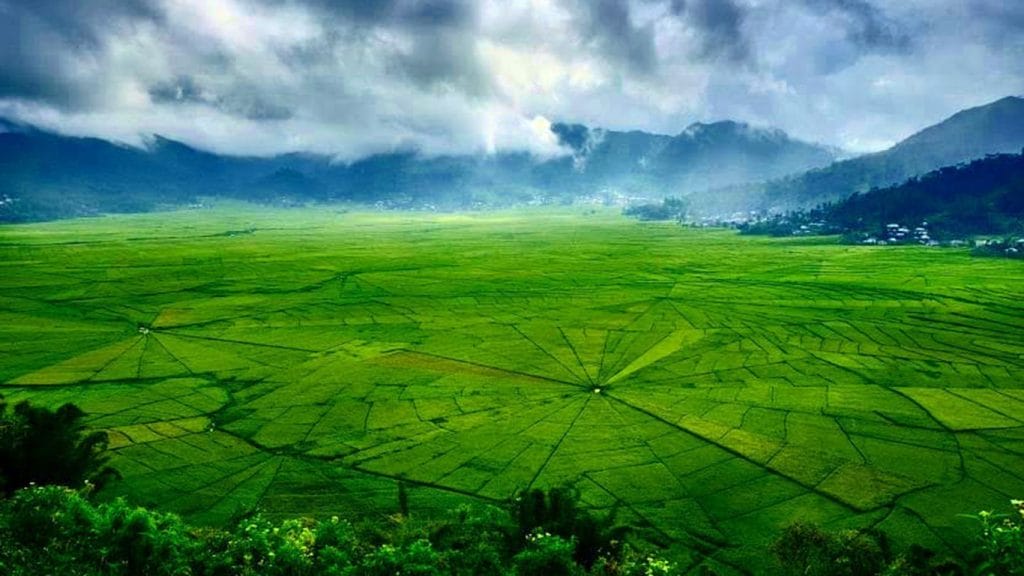
Don’t forget to visit the uniquely massive phenomenal circle crop – the Lodok Cancar Rice Fields. As the name implies, the location is in Cancar Village, about twenty to forty-five minutes from Ruteng. Lodok is the local language for the spider web.
Yes, you will see breathtaking, vast spider webs-shaped rice fields, which are actually the customary tradition of the Manggarai people regarding land (rice fields and gardens) division called Lingko. Lingko is a jointly-owned customary land to fulfill common needs.
The entry costs about IDR 20,000 per person.
Ranamese Lake
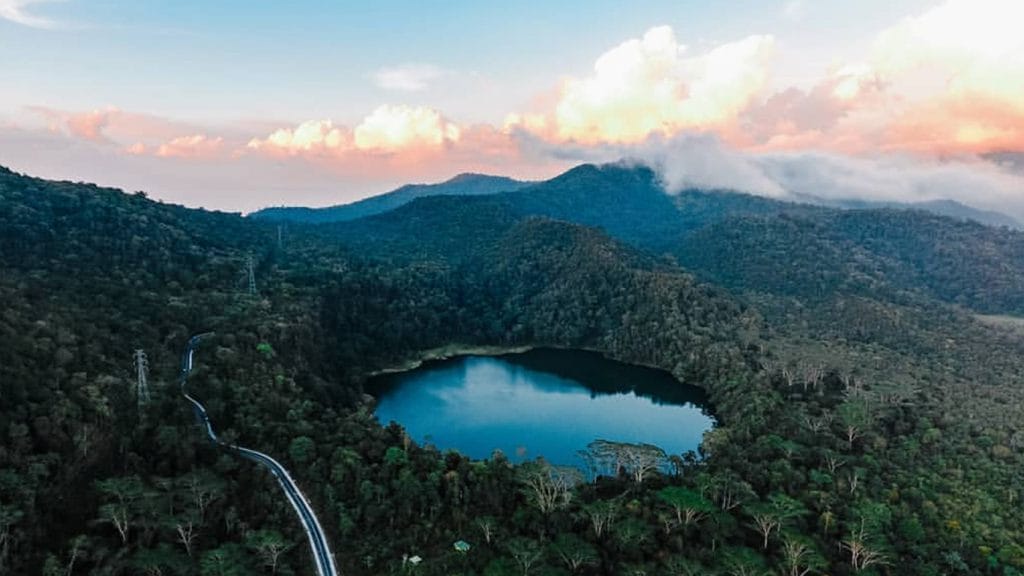
If you want more nature adventure, try visiting Ranamese Lake. It is a mountainous natural reserve surrounded by lush green forests. It has a crater lake of 21 meters in depth at 1220m altitude.
This place is calm with clear water and pleasantly cool air, perfect for walking around, trekking, or bird watching. You can also visit the nearby waterfall (75m in height) with the help of a guide. The lake ticket is about IDR 5,000.
Do not miss – Events or Festivals
We already learned about the traditional Manggarai houses, in which one of them serves to store the artifacts for ceremonies. They include shields and whips for one of the most known ceremonies in this region, Caci.
Caci is a traditional war dance in a stylized whip fighting in Flores. Gongs, drums, and singing will accompany this unique cultural celebration. You can see this festival during important hang woja (the Rice Harvest Thanksgiving Festival) and penti (the New Year’s Festival). The local villagers will sacrifice a cow or a buffalo at the altar.
If you want to know more about the Ruteng culture, never miss invitations to attend weddings, funerals, or birth occasions. Of course, you need to pay attention to the applied norms.
When to visit
Ruteng has a tropical rainforest cool climate with the lowest air temperature at the lowest 11°C (in June) and the highest at 26.3°C (in October). Moderate rainfall occurs from June to August, with heavy to hefty rainfall during the remaining months.
That way, you can plan your visit accordingly. Or else, you can come during the most important cultural festivals held.
How to get there
There are several ways you can get to Ruteng, each at your convenience.
By flight
Ruteng has its small airport – Frans Sales Lega Airport (Ruteng Airport). Even though the route seems to change frequently, several options are still left.
- You can fly from the provincial capital of Kupang (West Timor), Denpasar, or Ende during the dry season (May to October). The flight is three to four times a week by Trans Nusa.
- Aviastar Mandiri from Selayar
- NAM Air from Kupang
- Susi Air from Waingapu
By bus
Most travelers to Ruteng choose the first alternative of traveling by bus from Labuan Bajo towards the west, around four to five hours to Ruteng.
In addition to local bus (costs about IDR 120,000), there are more convenient choices like booking a seat in a travel or an air-conditioned minibus.
The second alternative is taking another direction, to the east of the closest Bajawa town, about a five-hour journey. However, most visitors usually skip Bajawa and choose to straight-ahead to Ruteng from Ende (skipping Bajawa), around nine hours of a bus trip.
By car
Traveling by car can be quite costly yet more convenient. There are a lot of shared taxis or Travel cars in Labuan Bajo that will take you to Ruteng. You can negotiate the price (ranging from IDR 250,000 – 600,000).
Where to Stay
It is better to book the following lodge options before visiting Ruteng.
Rima Hotel
It is located at Jl. Ahmed Yani No. 14 is a Swiss-styled hotel with its dark-wood structure. A Swiss cuckoo clock will welcome you at the reception. This hotel has convenient facilities like an internet cafe and a small shop that sells toiletries, snacks, and drinks.
- A “Business room” or Standard room, facilitated with clean sheets, hot water, hot shower water, and a western-style toilet.
- An “Economy room” accommodates up to three people and provides joint cold-water bathrooms.
- The price range is around IDR 300,000 to 500,000, including free breakfast (egg toast and local Ruteng coffee).
The Kongregasi “Susteran” Santa Maria Berdukacita (MBC)
You can find this convent at Jl. Ahmed Yani No. 45. It is a peaceful and clean option to stay at a reasonable price (IDR 200,000 for a double room), including a hearty breakfast (coffee with eggs and bread) and hot water showers.
The nuns close the gate at 9 pm, and there is no Wi-Fi connection.
Hotel Sinda
According to the locals, it is the “best hotel in Ruteng,” with a price range starting from IDR350,000 for a standard room. More pricey rooms are available to choose from.
Ranaka Hotel
Considered a very standard or basic hotel and situated at Jl. Kom L Yos Sudarso No. 2. The price is IDR 60,000 per person (or IDR 100,000 for two people), including a piece of sweet bread plus tea or coffee as breakfast.
More accommodations are as follows:
- Wisma Guesthouse Leko Lembo
- Mario’s Hotel
- Hotel Bunga
- Hotel Dahlia
Where to Eat
The next thing Ruteng Travel Guide will take you is the culinary journey.
For a general local experience, you can beat the chilly evenings by satisfying your palate with the local soups, Baksoto and Soto Ayam – that are popular among the locals.
As for appetizer (or even dessert), you can ask for and taste the delicious hot “Pisang Goreng” (fried bananas).
You can find a lot of Padang Restaurants too.
Ruteng Drinks
Never miss the chance to drink Ruteng coffee. It is legendary in Flores, alongside Bajawa coffee. Since the default coffee is served with sugar, you can request beforehand if you have less or even no sugar.
Another popular local culture is drinking traditional alcohol or arak (sopi or moke), mainly due to the Ruteng cold climate.
Places to eat
The following are more recommendations of places to eat and drink in Ruteng.
Kopi Mane Inspiration
Kopi Mane Inspiration is a cozy cafe that offers legitimately high-quality freshly ground coffee and with machine ones. Try their signatures ginger coffee or ginger tea for sure.
This place also serves very delicious Indonesian dishes, including fried chicken with chips (French fries). The owner is an amicable English-speaking person. You can find this cafe at Jl. Yos Sudarso No. 12.
Agape Café
It is a quite decent cafe on Jl. Bhayangkari No.8 in the town center. You can taste the tasty Flores coffee and an assortment of Indonesian and Western cuisines.
Rumah Makan Chaca
If you want more substantial meals, go to this Rumah Makan, dubbed as one of the best restaurants in town. Located on Jl. Diponegoro No.12 proudly serves traditional Indonesian dishes at a more reasonable price, run by a friendly owner.
Rumah Makan II
You can head to the bottom of the town square to find this dining place. Although somewhat costly yet it offers a selection of delicious Indonesian menus.
The list can go longer as follows:
- Near Resto & Café
- Waroeng Bu Nur
- Spring Hill Restaurant
- RM Simpang Andalas
- Restaurant Merlin
Getting around
Since Ruteng is a small township, you can easily explore and roam by a motorbike or “ojek.” The motorbike rent is around IDR 100,000 per day. You can get it from your accommodation.
Still, due to the Ruteng topography, you need to consider your travel time to visit most tourist objects, particularly if you take public transportation (minibus).
Of course, the local costs mentioned in this Ruteng Travel Guide may slightly change, yet the range can be the closest one. So, are you ready to experience one of the most peaceful paradises on earth in the eastern of Indonesia? Ruteng proudly welcomes you.

